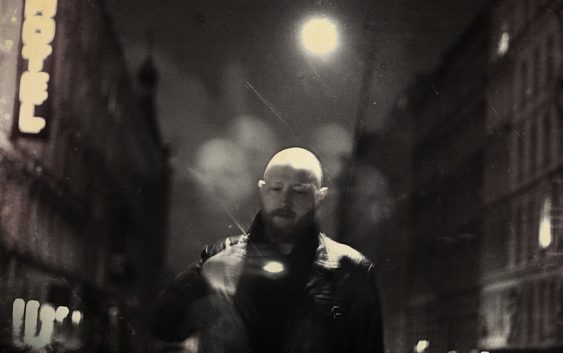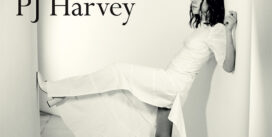1. Hello Kim, so nice to have you here. You have been “around” for quite some time and hopefully you will keep on thrilling us with your releases. It has been a while since you started your project Of The Wand & The Moon and since its first release back in 1999. Looking back, how do you feel about this journey today?
Kim: Thank you for the interest and taking time to do the interview.
Yes, the journey has been on for a while I guess. “We push forward, plunge onward, always towards the end…” as the song goes. I usually don’t look back. And I don’t really listen to my past work. Probably as I play the songs live, I listen to old stuff through that. However, sometimes I can be surprised by my past work. Sometimes it feels so far away and sometimes so close. But yes, the journey has been full of joy and full of sadness.
2. Since the term neofolk is often used to describe Of The Wand & The Moon, can you explain what that term means to you and would you use it yourself to describe your musical and lyrical expression?
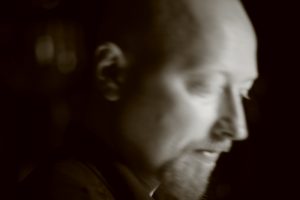 Kim: I guess this genre had and has a lot of labels attached to it. Dark folk, Apocalyptic folk etc.
Kim: I guess this genre had and has a lot of labels attached to it. Dark folk, Apocalyptic folk etc.
For my music I kind of like the term ‘Loner folk’ that my friends Sarah Hepburn and Mikkel Elzer mentioned to me recently while I was working on my next 7” single which will be named “I Called Your Name”.
But yeah, whatever you want to call it, neofolk, etc. this is where I’m from. However, when someone that hasn’t a clue of what I’m doing asks, I usually say it’s alternative dark rock music. I think the last album I did was a kind of a step on another path. I wanted to move in a less conventional direction and towards a less conventional style with my music. It seems that the next works will go further down that path. We will see…
3. Your sound and overall feeling is somewhat dark, melancholic, mystic and atmospheric. You evoke feelings of loneliness, sadness, longing, but wrapped up in magic and prevailing love. And what is so clear about your creation is that it is truly a sincere one. What is your true inspiration for such an expression? Your inner world or the reflection of the outside one?
Kim: I guess the inspiration is the everyday disappointment and misery of life… haha… Well, I have always been drawn to melancholic music in one way or another, I think. Depression also helps.
4. Even with the acoustic sound you manage to create that full atmospheric soundscape. Your flowing and floating melodies (even though the form requires repetitive phrases) are rich in every sense. What instruments do you use predominantly to create such a magical sound voyage?
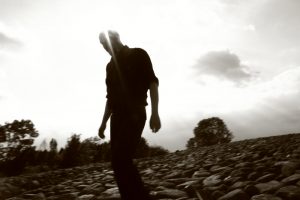 Kim: At a very young age, I used to play homemade songs in the kitchen for my mom while she cooked. I remember that I had a little Ukulele or small guitar. Later my father bought me an acoustic guitar. I think I was about 8 or 9. And then I took some drum lessons, but quit after some months since the teacher always turned in sick. He must have hated us kids bashing away on the drums endlessly… Haha… I surely would have.
Kim: At a very young age, I used to play homemade songs in the kitchen for my mom while she cooked. I remember that I had a little Ukulele or small guitar. Later my father bought me an acoustic guitar. I think I was about 8 or 9. And then I took some drum lessons, but quit after some months since the teacher always turned in sick. He must have hated us kids bashing away on the drums endlessly… Haha… I surely would have.
But, at the age of 15, I picked up the guitar seriously and found out that I had a flair for it. So I practised a lot. Mostly technical stuff. John McLaughlin, Jazz fusion, classical guitar, John Renbourn, etc. those kinds of things. And then it went on to doom metal and neofolk.
5. How do you divide your creative process into composing and writing lyrics? Which comes first?
Kim: Mostly I do the music first. And that sets the mood, whatever. And then it makes way for the lyrics. Sometimes I have lyrics written down. Phrases, quotes or something that I have found interesting along the way, that can be used in the song. But mostly the music has to be there to determine the mood, feel, length, measure etc. to make way for the lyrics.
6. Since you play the instruments when recording in the studio, do you find that process lonely or liberating? Can you enjoy the solitude of composing and recording? I’m asking this since I have heard this description quite often from your colleagues who also said that they even quite liked it.
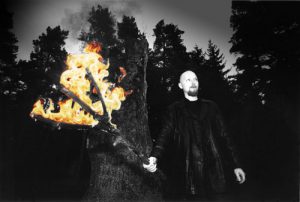 Kim: It is a lonely process composing. A lonely path. Everything has to come from you. But for me there is really no way around it. I tried being in a ‘band’ where everybody had to be involved, but they weren’t. It was hell.
Kim: It is a lonely process composing. A lonely path. Everything has to come from you. But for me there is really no way around it. I tried being in a ‘band’ where everybody had to be involved, but they weren’t. It was hell.
Everybody doing nothing but me, and, of course, in turn they wanted to have credit for my work nonetheless. That got pretty boring in the end. Also, the music I do with OTWATM is very personal, so it would not work to have someone else having a say in the essence of the music. Actually, when I thought of doing this type of music, I wanted someone else to do the vocals. But pretty quickly I realized I had to do it myself. It was too personal.
However, I do have guest musicians in the studio and live musicians play my stuff. And I try to leave them a lot of freedom to play whatever they want to add to the music. To keep open for new input. Usually it works great. And if it doesn’t, the dictator will strike down haha…
7. But does something change for you when you‘re performing live? How many other musicians do you have to hire for a live show in order to deliver the full Of the Wand and The Moon experience? What is the difference to you between playing solo or with the band?
Kim: I think that at the most there were 7 people on the stage. Usually there are 6. But sometimes we also play as a trio. I guess solo performances and full band performances are two different animals. And I like them both. Like when I see other bands live with stripped down performances or full band. It is very different but works either way. Like recently, when I played a tour with my friend TJ (King Dude). The full band performance was brilliant. But so have been his past solo performances. Beautiful and intimate. Very different and you can’t really compare the two. But both sounded great, each in its own way.
I hope it’s the same with my solo and full band performances.
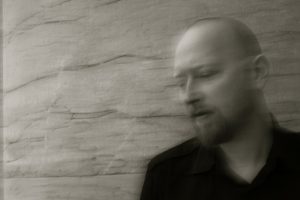 8. Where do you feel more at home? In the studio or on the stage?
8. Where do you feel more at home? In the studio or on the stage?
Kim: I love creating in the studio. To hear what you have been working on for a long time come together and hopefully sound even better. It’s possible I like the studio better. But I also love the feeling of going somewhere else than home and just being on the road. Somehow the depressive everyday weariness disappears for a while.
9. You have been quite busy during the recent period and the whole June: looking at the dates of your recent European tour, every day another city. How much do you enjoy touring experiences, playing in different venues, meeting different people? Do you feel that the feedback you get from the fans and audience makes it all more worthwhile?
Kim: Well, as I said, I find it great to have a break from the tiresome everyday bleakness.
Sometimes it’s visiting new amazing places that you’ve never been before. Meeting old friends, new friends, weird, kind, sweet people etc. The June tour with King Dude was such a great experience. It was a long tour but we had a great time. And TJ even introduced me to Brass Monkey one morning in Barcelona.
I’m forever in his debt haha…
10. You recently also played at the Wave Gotik Treffen festival. Can you compare festival experiences with the ones from the solo shows? Which do you prefer?
Kim: I can’t really say. Both are fine with me.
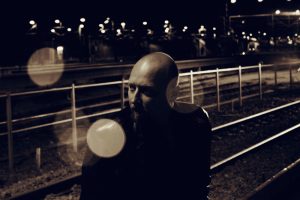 11. Since 2012, you have performed at Runes & Men Festival in Dresden and Fire & Sun Festival in Leipzig. Do you think the success of those festivals helped in making neofolk music more popular in the European “dark” subculture and how do you feel about this year’s festival being the last?
11. Since 2012, you have performed at Runes & Men Festival in Dresden and Fire & Sun Festival in Leipzig. Do you think the success of those festivals helped in making neofolk music more popular in the European “dark” subculture and how do you feel about this year’s festival being the last?
Kim: Runes & Men were a nice platform for the music. Whether or not it helped the music be more popular, I have no idea. I don’t think about that, to be honest. But I think it is good not to keep doing the same thing over and over again. And in turn I think it is good that R&M ends with Death In June closing the festival as it began. “All Things Must Pass….”
12. During your long time on the music scene, you had some nice collaborations. Can you reveal some of them and the stories behind?
Kim: There have been some really wonderful collaborations along the years. There have been so many and I wouldn’t like to forget someone by picking out a few. However, off the top of my head, I am grateful to have known and worked with Andreas Ritter from Forseti. Who knows what he could have created if he hadn’t had his stroke. And of course John Murphy, who is no longer with us, also comes to my mind as I write this. We had some really good times, too.
13. But back to your music roots now. Of the Wand and The Moon is not your first project, so how and when did you get involved in music and what are your music influences? What does Kim like to listen to?
Kim: My father had an extensive record collection with a lot of Jazz and 60s music. What stuck with me was The Beatles, Serge Gainsbourg etc.
In my teens I was very much into The Police and British rock and punk through my brother. Kiss and Adam & The Ants were huge faves of mine. Anyway, the first band that I played in was a doom metal band in the early 90’s, and at the same time I had discovered Thunder Perfect Mind with Current 93/DIJ/Sol, Invictus etc. As to what I listen to, it seems that 60s/70s soundtrack never goes away. I love stuff like Mersey Beat, wall of sound etc. But also newer stuff like drone doom, Sunno))), Earth, minimal electronic like The KVB, Vår, Marching Church, King Dude, Chelsea Wolfe, Anna Von Hausswolff, Offermose, Den Sorte Død, etc etc… These are just some that come to mind now. Too much to get into here….
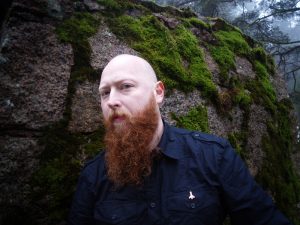 14. The Lone Descent makes a shift from your earlier work, both musically and vocally, and I am thrilled by your vocal performance and great arrangements that can be heard on it. It also has a retro feel to it, so where did you draw your inspiration from for it? At moments I feel I have been transported back to the 60s and 70s.
14. The Lone Descent makes a shift from your earlier work, both musically and vocally, and I am thrilled by your vocal performance and great arrangements that can be heard on it. It also has a retro feel to it, so where did you draw your inspiration from for it? At moments I feel I have been transported back to the 60s and 70s.
Kim: Yes, as I have mentioned before, the 60s/70s sound has followed me from my youth. And guess it feels natural to me to go back into that time. I also felt I had done the ‘neofolk’ album with Sonnenheim and I wanted to break off from the conventional sound of the genre.
15. You have released Tunes For A Twilight, Tears For A Nighttime as a cassette tape limited to 100 copies only. What can those 100 lucky ones enjoy?
Kim: The tape was made for the March/April US tour. And to portray the songs in a more live fashion. I thought it could be nice to do the songs that would be more ‘live’ and without a very ‘produced’ feel. With less layers and more stripped down. I think it turned out well. I decided to release an EU version as well, with a couple of other songs and versions. The EU version was done in 300 copies. Think there might be copies left. Otherwise, it is available at the Tesco Bandcamp site as stream or download:
https://tescogermany.bandcamp.com/album/tunes-for-a-twilight-tears-for-a-lifetime
https://tescogermany.bandcamp.com/album/tunes-for-a-twilight-tears-for-a-nighttime
16. Thank you, Kim, for being our guest, and for the last question, we would really like to know what Kim enjoys besides creating his music. 🙂
Kim: Thank you for taking the time.
I guess Kim at this moment in time likes to get very drunk and dull his pain.
Love…


